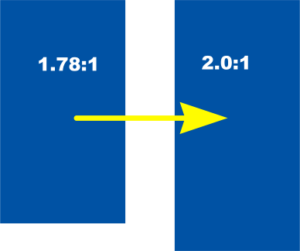Display Daily’s good friend, Dr Ray Soneira of DisplayMate, has published his thoughts about the future of displays in mobile phones based on his experience of testing the best smartphone displays over the last seven years, during which the pendulum has slowly swung from LCD to OLED.

 Like every other pundit that we have seen reports from, Soneira expects Apple to adopt OLED for the high end of its next smartphone series, as both Samsung (with a flexible and curved OLED) and Google (with its rigid glass-based OLED) have done. The main reason, he believes, is that OLED has now surpassed LCD in performance in this segment. As well as the thinness, lightness and small bezel advantages, his testing has endorsed the better response times, viewing angles, contrast performance and colour accuracy claimed for the latest OLEDs.
Like every other pundit that we have seen reports from, Soneira expects Apple to adopt OLED for the high end of its next smartphone series, as both Samsung (with a flexible and curved OLED) and Google (with its rigid glass-based OLED) have done. The main reason, he believes, is that OLED has now surpassed LCD in performance in this segment. As well as the thinness, lightness and small bezel advantages, his testing has endorsed the better response times, viewing angles, contrast performance and colour accuracy claimed for the latest OLEDs.
OLEDs can also support lower power ‘always on’ modes, although Soneira expects LCD to continue to offer better power efficiency in ‘all white’ screen content.
JDI’s new flexible LCD announcement aside (JDI To Make Flexible LCDs in 2018 – subscription required), OLED has been able to take advantage of the fact that OLEDs can be made on plastic substrates that can be bent in manufacture, although flexible OLEDs are covered with rigid glass, today. He expects plastic covers in the ‘near future’. Turning to the supply of flexible OLEDs, LG and Samsung are well ahead of others that are trying to enter the supply chain, such as AUO, BOE, Everdisplay, JDI (which has now absorbed JOLED), Sharp, Truly and Visionox. As he points out, 95% of the AMOLED market is being supplied by Samsung so that any high end smartphone that has a flexible OLED this year will be using a device from Samsung.
That will mean a challenge for phone brands to differentiate their products.
Samsung Galaxy
Soneira expects Samsung to launch the Galaxy S8 in March or April (as we do), and he expects that the display will be a development not of the S7, but of the Note 7 display which was found to have an outstanding display and received the “Best Smartphone Display” award from DisplayMate. In particular, he highlights that the Note 7 was only available (while it was avaiable) with a curved display and he expects the S8 to take the same route. The Note 7 also moved the colour gamut coverage from AdobeRGB to DCI-P3 and if Samsung maintains that, others will have to match it (although Apple has been moving towards P3 coverage for a while).
He also points out that the colour gamut of the S7 is user configurable, so those reviewers that ‘ rant about the poor Color Accuracy’ have simply failed to set up the phone correctly!
Soneira points out that if, as has been widely rumoured, the display covers more of the phone surface than previous models, the resolution and aspect ratio will have to change if the overall device size and aspect ratio. While the S7 was a traditional 16:9 2560 x 1440, he expects the new one to be around 2.0:1 and suggests that it could go to higher resolution – either 3840 x 1920 or 4320 x 2160, each of which would be able to deliver UltraHD and the higher of which could also support DCI 4K as used in the cinema. (It would also bring resolution up to the same kind of level as dedicated VR headsets, which could be very helpful in boosting the quality of VR apps).
HDR has been a hot topic and the peak brightness of over 1,000cd/m2 that he measure on the Note 7 could allow very good performance with that kind of content as well as addressing the issue of better performance in higher levels of ambient lighting – a long standing issue for DisplayMate.
Google Pixel
Soneira has not yet tested the Google Pixel, which is made by HTC for Google, but it has a rigid OLED of either 1920 x 1080 or 2560 x 1440 (depending on the variant). He expects the next version to also have a flat OLED and he expects it to boost gamut from ‘95% of P3’ (or AdobeRGB as he points out) to P3 full coverage.
Apple iPhone
Turning to Apple, he expects the iPhone 8 to have a flexible display that has a similar shape to the S7 Edge or Note7. Apple already has P3 gamut coverage with colour management when content of smaller gamut, such as sRGB, is shown. Like the Galaxy, Soneira believes that Apple will go to 2:1 or close to that but at lower resolution than Samsung – perhaps 2160 x 1080 or 2880 x 1440 in order to keep its ppi in a similar range to current Retina Displays.
Software and Firmware is Critical
Finally, Soneira believes that the phone makers will use their skills in software, firmware and tuning to integrate the displays into their phones.
Check the DisplayMate website for the full article. – Bob Raikes

